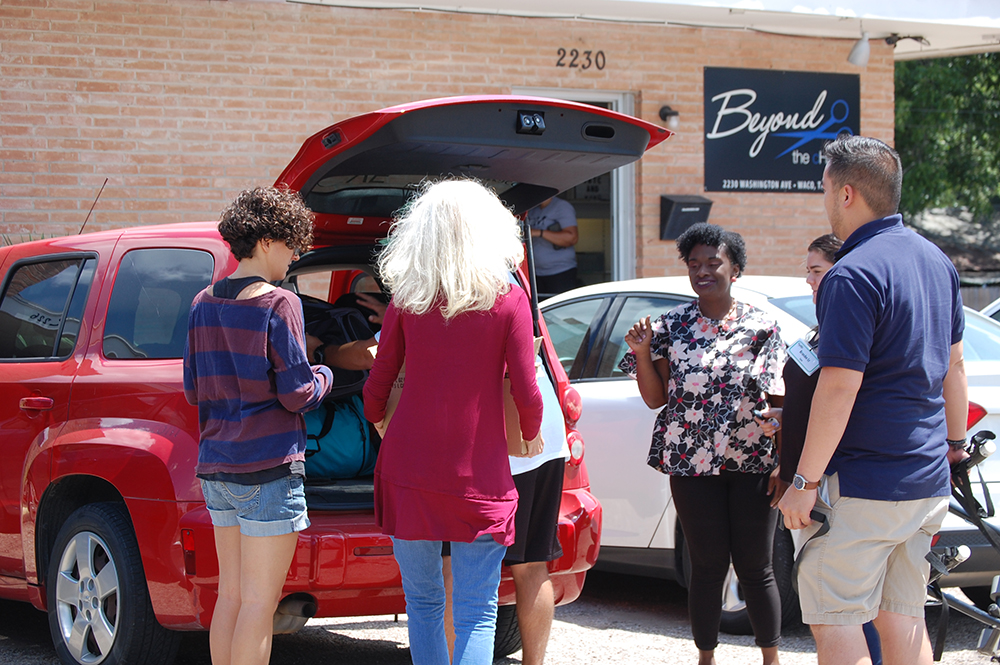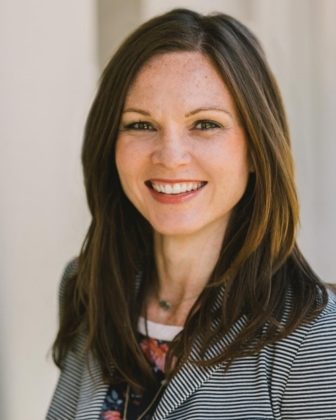
The Cove
A student’s belongings that Cove volunteers loaded the afternoon they moved him into his college apartment.
Each weekday afternoon, school buses in Waco, Texas, rumble down streets, pull up at designated stops and drop kids home. Some students, however, don’t have a home to go to. Some of them will get off at the Cove, a center serving kids who are homeless.
The after-school center, open Monday through Thursday from 4 to 8 p.m., is a place where kids can use computers, do homework, wash clothes, shower and eat a family-style dinner. They can take part in educational programming, talk with a case manager and access counseling services.

The Cove
Kelly Atkinson
But what happens when the Cove closes at 8 p.m.?
As part of a coordinated national effort to end youth homelessness, the Cove is planning to set up host homes where kids can stay for several months or possibly the remainder of the school year.
The Cove will apply for a portion of a $2.2 million grant from the U.S. Department of Housing and Urban Development (HUD), received through the Heart of Texas Homeless Coalition.
“What we need are some transitional housing opportunities,” said Kelly Atkinson, executive director of the Cove. “Research shows us that host houses are an effective intermediate intervention in terms of providing stability for youth.”
They’re also one element in a national strategy that empowers communities — including youth affected by homelessness — to develop comprehensive programs.
In Waco, a city of about 138,000 in central Texas, people are interested and the community is open to the plan, Atkinson said.
Why are youth homeless?
About 1,000 Waco students are believed to be homeless, with 200 of them having no parental support.
The number reflects a problem across the nation. Nationally, 1 in 30 youth ages 13-17 experience homelessness at some point in a year’s time, with three-fourths reporting complete homelessness (including being kicked out of their home or running away) and the rest couch-surfing. The figures come from the Voices of Youth Count from Chapin Hall at the University of Chicago.
Even worse, 1 in 10 young adults ages 18-25 report homelessness, many after aging out of foster care. LGBTQ young people are twice as likely to be homeless.
The main reasons high school students become homeless are family conflict, family economic problems or instability after being in the foster care system, according to the National Coalition for the Homeless. Kids may have been abused or neglected at home, have a parent die or become incarcerated, or been kicked out because of sexual orientation or pregnancy, according to the Cove.
Every public school district has a person responsible for identifying and assisting homeless students, said Steve Berg, vice president of programs and policy at the National Alliance to End Homelessness.
In Waco, that person was Cheryl Pooler. Over five years of working as the Waco Independent School District homeless liaison, she saw numbers of students who had been kicked out, abandoned or abused and had nowhere to go. In 2015, she co-founded the Cove.
In the 2018-19 school year, the Cove served 73 students. On average, each came to the Cove 23 times, for a total of 1,670 student visits, Atkinson said.
How host homes work
As Pooler was dealing with the problem in Waco, other cities were searching for solutions.
In Nebraska, the Community Action Partnership of Western Nebraska developed a host home network among its services.
“These people are volunteers who take the kid in,” Betsy Vidlak, supportive health director at Community Action Partnership, told the Star-Herald newspaper.
Often, homeless young people find friends or other adults who give them a temporary place to say, Vidlak said. But these hosts may not have much money or know how to help. A host home program can formalize the arrangement and provide support. Hosts may get a stipend.
A host home program mobilizes caring adults within a community. Organizations hire a coordinator to recruit hosts and then screen and train them.
Point Source Youth is a nonprofit seeking to scale up host housing across the nation, as well as another model known as rapid rehousing. The nonprofit also supports family strengthening programs for homeless youth.
In the Point Source Youth model, a host home provides a welcoming space for up to six months for a young person, giving the youth time to repair relationships with family or to figure out other housing options. Hosts do not fill a parental role and are not there to question young people’s choices. A case manager maintains weekly contact with the youth, and the coordinator checks in weekly with the host.
In Durham, N.C., the LGBTQ Center of Durham runs a hosting program that serves mostly transgender youth of color, said KC Buchanan, the center’s host home coordinator. She spoke at the recent Southern Symposium on Solutions to End Youth Homelessness in Atlanta.
Both youth and host need support, she said. Hosts need support in figuring out how to “not center themselves in the relationship,” she said.
“Youth need a little bit of grace,” she said.
A youth-led communitywide program
The Cove aims to apply for funding to set up host homes from HUD’s Youth Homeless Demonstration Program (YHDP) . The program requires a commitment to positive youth development, trauma-informed care and a housing first strategy. It also requires a coordinated communitywide approach, said Berg, of the National Alliance to End Homelessness. The local child welfare agency must be involved, and young people who have experienced homelessness must have decision-making roles in the program.
The basic idea is to ask the community to pull together, figure out who homeless youth are, what their needs are, the kind of resources it will take to meet those needs and who can provide the resources, Berg said.
Youth voice is a very important ingredient.
“There’s a lot of feeling that people who experience homelessness are the ones who really understand it,” Berg said.
The campaign to end youth homelessness has come after national campaigns to house homeless veterans, families with kids and people with mental health needs.
“Veteran homelessness has been reduced substantially over the last 10 years or so,” Berg said.
The national movement around homelessness has focused on breaking down the silos in which agencies and nonprofits work, he said. It’s involved an “unprecedented” collaboration among federal, state and local agencies, nonprofit organizations and other sectors of the community, according to the U.S. Interagency Council on Homelessness.
Next steps in Waco
In Waco, the coalition is moving forward.
‘We’ll be developing a coordinated community plan,” Atkinson said, as the Cove prepares to set up host homes.
The state Department of Family and Protective Services is involved, and the Cove already has a youth advisory board that meets monthly. A larger community youth advisory board could also be developed, she said.
The HUD grant brings in a lot of technical assistance to Waco, and the city will benefit from national experts, Atkinson said.
“It’s infusing our community with a lot of resources we didn’t have,” she said. The community coordination “will help to fill in gaps young people fall through as they pass from one agency or system to another.”
This story has been updated.






























